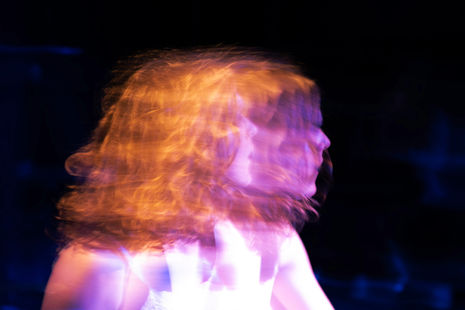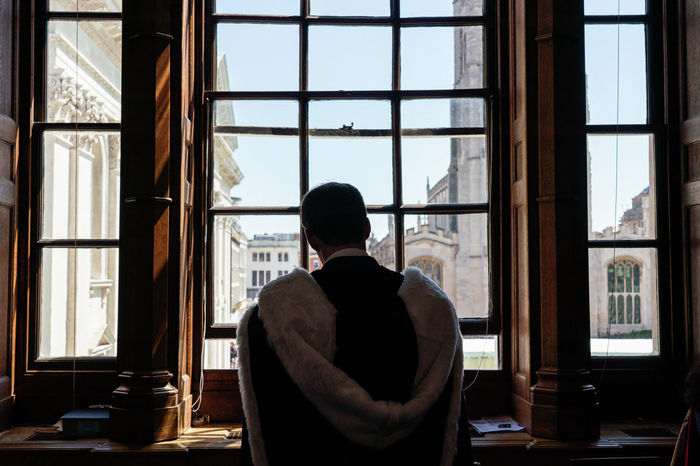Not another sad gay – what are we actually staging as queer theatre?
Leon Rake explores the complex politics of queer theatre in Cambridge

To name something is not the same as to interrogate it, and to centre queerness onstage is not inherently to challenge anything. There’s a sense, sometimes, that to say a piece is ‘queer’ is to have already said something meaningful. But what has actually been said? And what are we actually staging when we say we’re making queer theatre?
Too often, it feels like identity has become its own genre. One with certain rules, certain beats: the revelation scene, the awkward kiss, the devastating silence at the kitchen table. We know how this goes. A character discovers themselves, suffers a rupture, reaches catharsis, exits wounded but wiser. Again and again, the queer monologue returns, slightly reframed, slightly restyled, as if variation alone could stand in for depth. But the bones remain the same.
So, are we staging the queer self, or staging an idea of how queerness should look to others? In repeating familiar tropes, do we affirm queer experiences, or do we teach ourselves how to perform legibility to an audience conditioned by mainstream taste?
“Are we staging the queer self, or staging an idea of how queerness should look to others?”
Cambridge student theatre prides itself on range, but in queer productions, a curious homogeneity sets in. We encounter queerness primarily through grief, hesitation, or trauma. It’s no coincidence that many of these stories are white, middle-class, and aesthetically tasteful. The pain is curated, stylised, and, crucially, recognisable. Queer characters cry quietly, love beautifully, suffer photogenically. But there must be room for more than one kind of queer pain.
This is not a call to abandon coming-out stories. There’s a reason they endure. For many students, queer theatre is the first opportunity to process identity out loud, and to make art from the spaces where language once failed them. These pieces matter. But they must not become the only grammar we know.
Part of the problem is aesthetic substitution. Queerness is often treated as a moodboard: low lighting, cigarette silhouettes, velvet trousers, a line from Orlando. These are signifiers, not structure. The theatre looks queer, but it behaves like any well-behaved naturalistic play with a conflict, climax, and resolution. But queerness, at its most vital, is uninterested in resolution. It is about fragmentation, opacity, resistance to normativity in all forms. The challenge, then, is not simply to insert queer themes into existing models, but to expand the form itself.
“Queerness, at its most vital, is uninterested in resolution”
The distinction between queer content and queer form is critical. A play can feature all the right characters, all the right labels, and still operate within deeply conservative frameworks. A truly queer theatre practice would ask: what if narrative didn’t unfold linearly? What if characters didn’t have to explain themselves? What if language fractured under pressure, or time looped, or desire remained unnamed? What if queer theatre wasn’t about being seen, but about seeing differently?
Here, the Cambridge scene has potential. We have the resources, the minds, the rooms. But we also have the pressure to please, to succeed, to make theatre that can be easily read, reviewed, and remembered. Risk becomes harder under scrutiny. Queer work that’s angry, opaque, unlikable, or god forbid, experimental, is often dismissed as indulgent or incoherent. There is safety in soft lighting and sad endings. But safety is not the same as care.
And then there’s the question of audience. Who are these plays speaking to? Often, it feels as though they are gently educating a general audience on the nuances of identity, as if queerness were something to be translated rather than lived. If the audience is largely cis, straight, or unfamiliar with the language of queer life, then queer theatre can slip into a pedagogical role: it puts the queer character in the position of explainer, the play in the role of apologetic emissary. Visibility, it seems, is reserved for the well-behaved and the well-lit.
“The stage is still a kind of closet”
The stage is still a kind of closet. Even when the stories are queer, they are often crafted for approval. We write with applause in mind. But applause is not always the right end. Some of the most necessary theatre leaves its audience unsettled, even uncertain of what they’ve just seen. Queerness should be allowed to do that. It should be allowed to refuse coherence and to insist on strangeness.
To be clear, the abundance of queer work on Cambridge stages is no small achievement. It speaks to how far we’ve come, and to how hungry we are to see ourselves reflected. But now that we have that visibility, we must ask harder questions. Not just ‘Is this queer? ’ but ‘What is queerness doing here? ’ Not just ‘Do I feel represented? ’ but ‘What does this story make possible or foreclose? ’
Queerness on stage shouldn’t just be about being visible. It should be about what becomes visible when we stop trying to be seen the right way. Because some stories don’t ask to be told but to be risked. You’re born naked. The rest is drag.
 Features / Should I stay or should I go? Cambridge students and alumni reflect on how their memories stay with them15 December 2025
Features / Should I stay or should I go? Cambridge students and alumni reflect on how their memories stay with them15 December 2025 News / Dons warn PM about Vet School closure16 December 2025
News / Dons warn PM about Vet School closure16 December 2025 News / Cambridge study finds students learn better with notes than AI13 December 2025
News / Cambridge study finds students learn better with notes than AI13 December 2025 News / News In Brief: Michaelmas marriages, monogamous mammals, and messaging manipulation15 December 2025
News / News In Brief: Michaelmas marriages, monogamous mammals, and messaging manipulation15 December 2025 Comment / The magic of an eight-week term15 December 2025
Comment / The magic of an eight-week term15 December 2025










